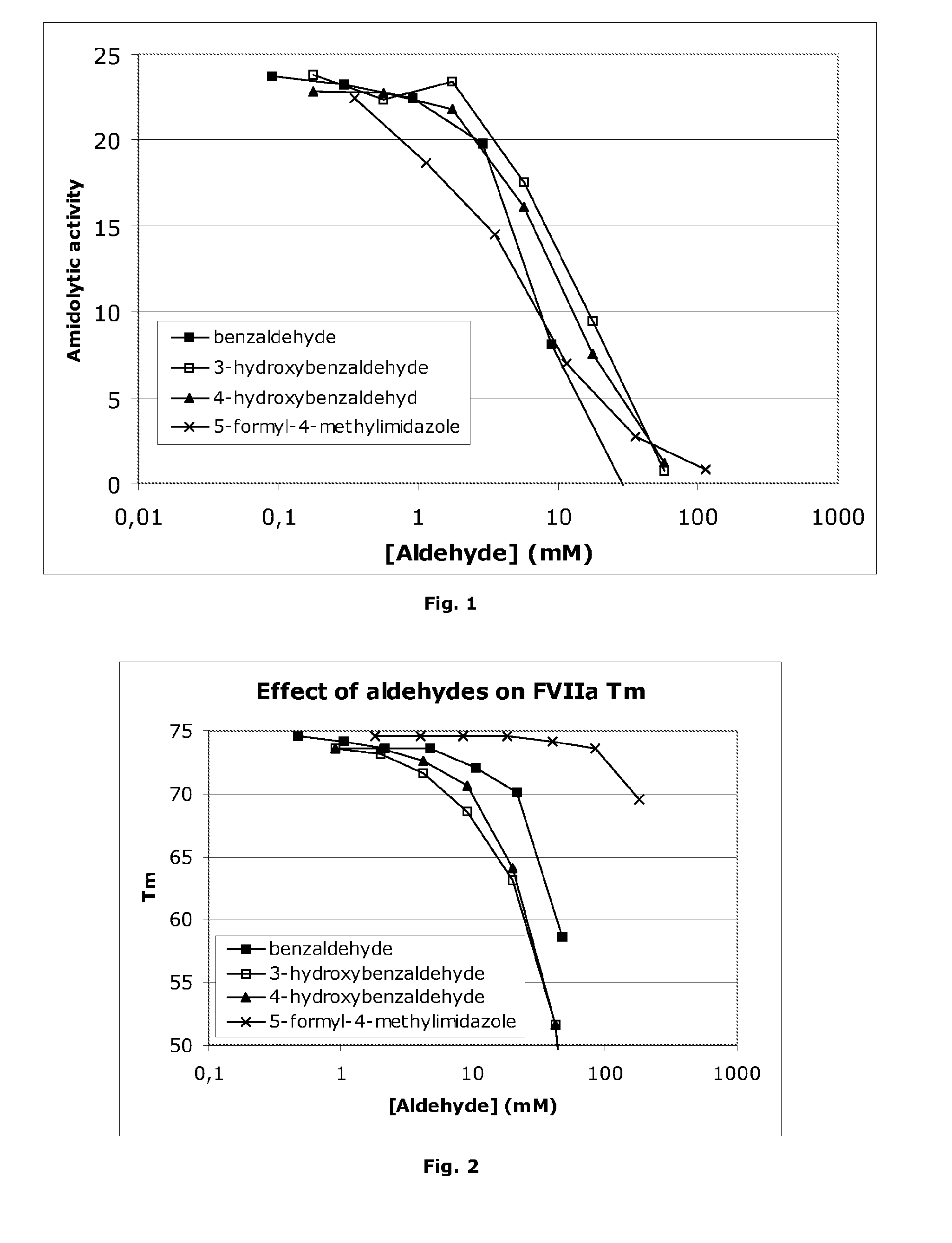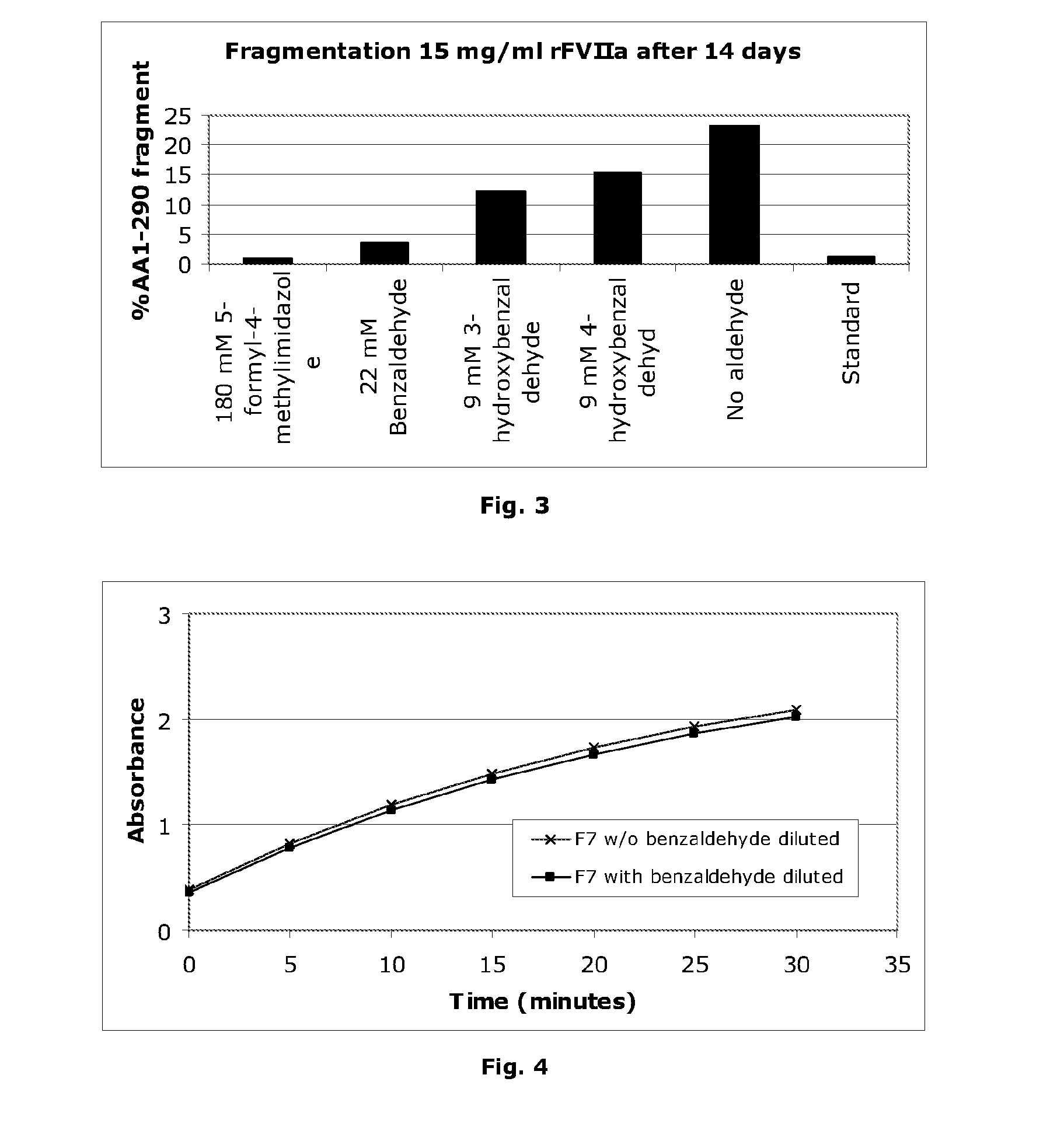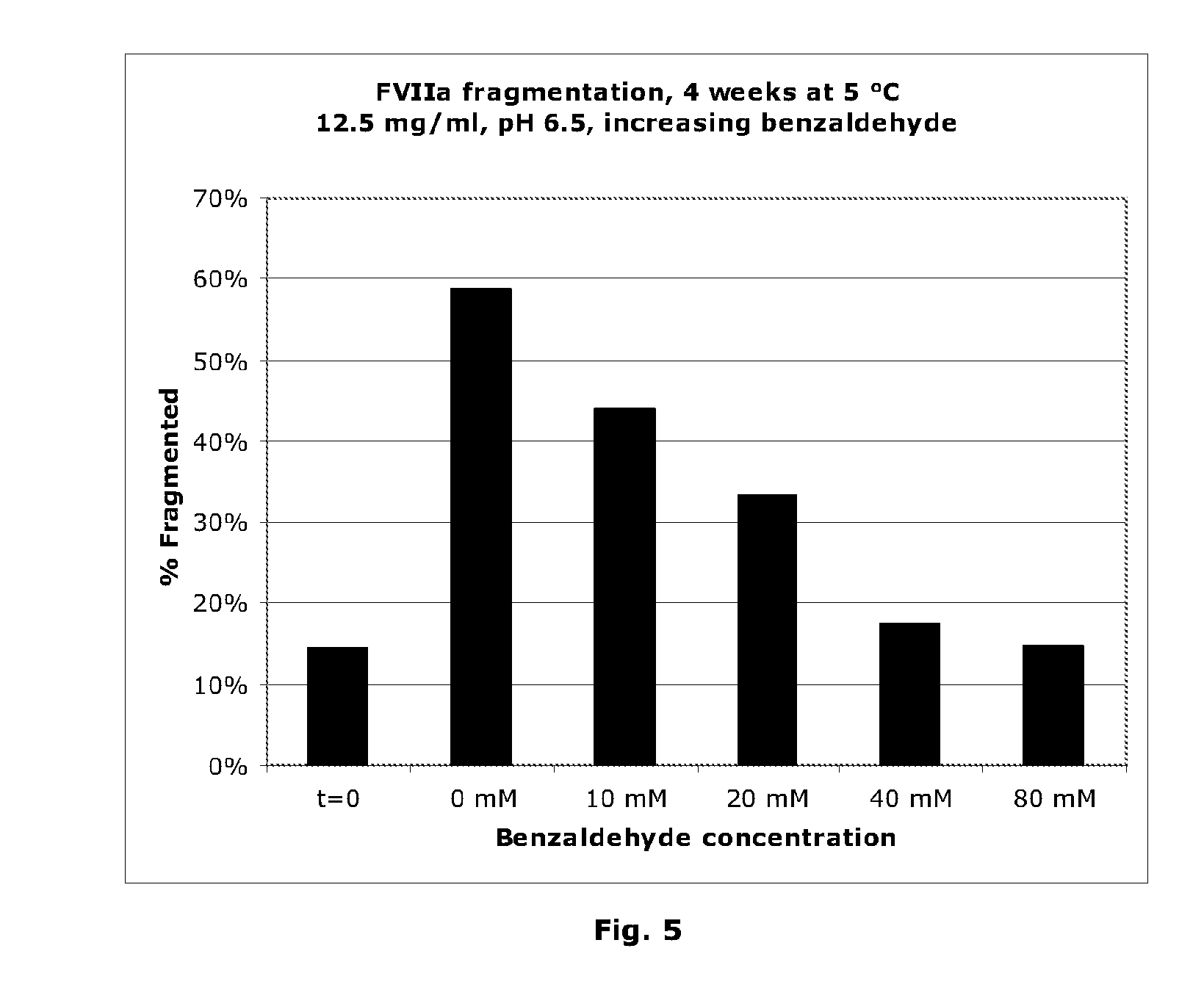Stabilisation of Liquid-Formulated Factor VII(A) Polypeptides by Aldehyde-Containing Compounds
a technology of aldehyde and polypeptides, which is applied in the direction of peptide/protein ingredients, drug compositions, extracellular fluid disorders, etc., can solve the problems of inability to predict the particular instability-related problems of a particular protein, loss of active protein, and deamidation, etc., to achieve the effect of improving stability
- Summary
- Abstract
- Description
- Claims
- Application Information
AI Technical Summary
Benefits of technology
Problems solved by technology
Method used
Image
Examples
examples
General Methods
Preparation and Purification of Factor VII Polypeptides
[0129]Human purified Factor VIIa suitable for use in the present invention is preferably made by DNA recombinant technology, e.g. as described by Hagen et al., Proc.Natl.Acad.Sci. USA 83: 2412-2416, 1986, or as described in European Patent No. 0 200 421 (ZymoGenetics, Inc.).
[0130]Factor VII may also be produced by the methods described by Broze and Majerus, J. Biol. Chem. 255 (4): 1242-1247, 1980 and Hedner and Kisiel, J. Clin.Invest. 71: 1836-1841, 1983. These methods yield Factor VII without detectable amounts of other blood coagulation Factors. An even further purified Factor VII preparation may be obtained by including an additional gel filtration as the final purification step. Factor VII is then converted into activated Factor VIIa by known means, e.g. by several different plasma proteins, such as Factor XIIa, IX a or Xa. Alternatively, as described by Bjoern et al. (Research Disclosure, 269 September 1986, ...
worked examples
[0145]The following examples illustrate practice of the invention. These examples are included for illustrative purposes only and are not intended in any way to limit the scope of the invention claimed.
example 1
[0146]The effect of aldehydes on Factor VIIa amidolytic activity is shown in an in vitro hydrolysis assay (20 mM imidazole, pH 6.5, 20 mM CaCl2), the results of which are illustrated in FIG. 1. A clear inhibition of amidolytic activity is observed. However, the apparent inhibition could be due to FVIIa denaturation. In order to address this issue, the denaturation temperature of FVIIa was measured in the presence of aldehydes. The measurement was performed by thermo-fluorescence, essentially as the thermal shift assay described by Lo et al., Analytical Biochemistry 332, 153-159 (2004). The denaturation temperature was determined as the point of maximum slope of the fluorescence intensity curve. The denaturation temperature is shown in FIG. 2 at various concentrations of aldehydes (25 mM imidazole, pH 6.5, 20 mM CaCl2, 60 mg / ml sucrose). In the case of 3-hydroxybenzaldehyde, 4-hydroxybenzaldehyde and benzaldehyde it is seen that the denaturation temperature drops significantly at hig...
PUM
| Property | Measurement | Unit |
|---|---|---|
| volume | aaaaa | aaaaa |
| concentration | aaaaa | aaaaa |
| pH | aaaaa | aaaaa |
Abstract
Description
Claims
Application Information
 Login to View More
Login to View More - R&D
- Intellectual Property
- Life Sciences
- Materials
- Tech Scout
- Unparalleled Data Quality
- Higher Quality Content
- 60% Fewer Hallucinations
Browse by: Latest US Patents, China's latest patents, Technical Efficacy Thesaurus, Application Domain, Technology Topic, Popular Technical Reports.
© 2025 PatSnap. All rights reserved.Legal|Privacy policy|Modern Slavery Act Transparency Statement|Sitemap|About US| Contact US: help@patsnap.com



